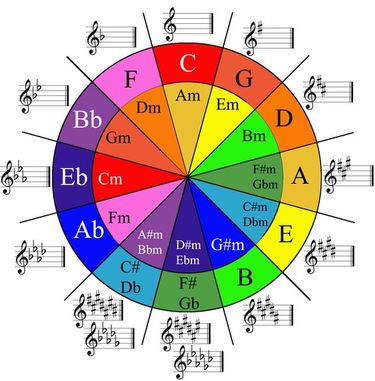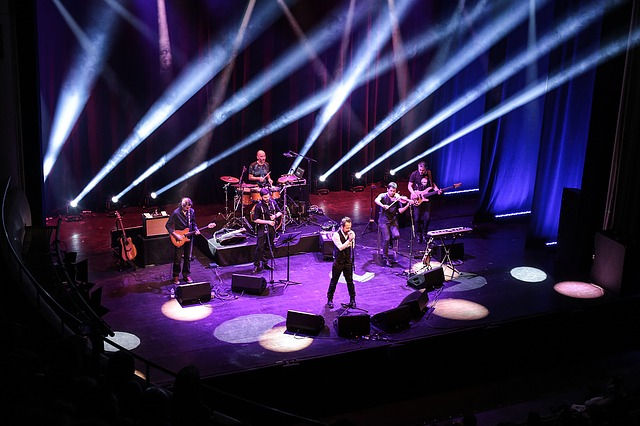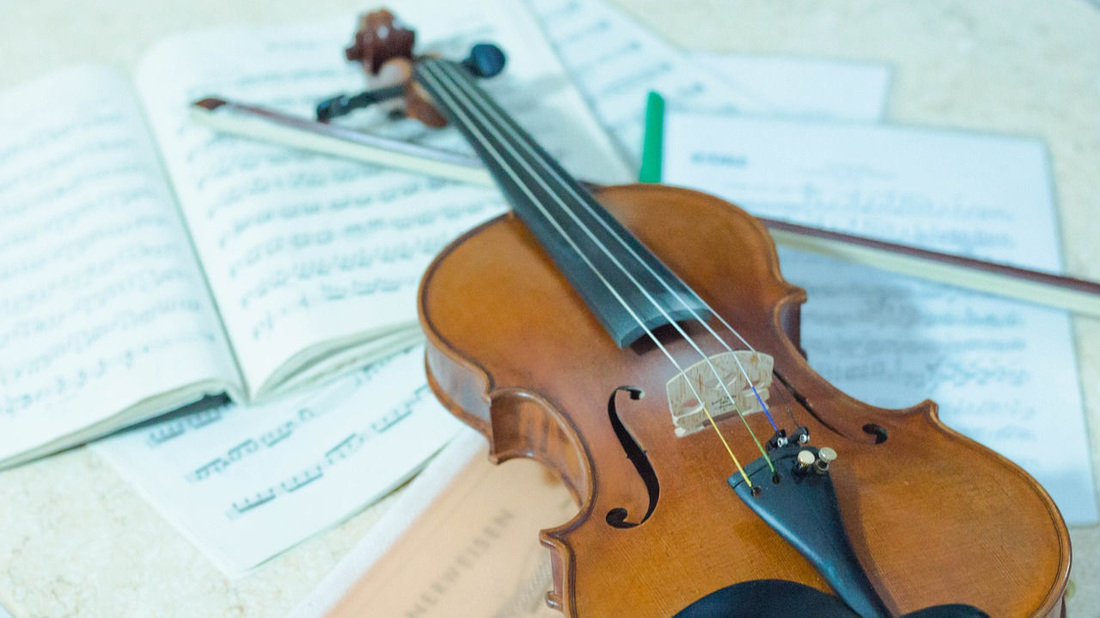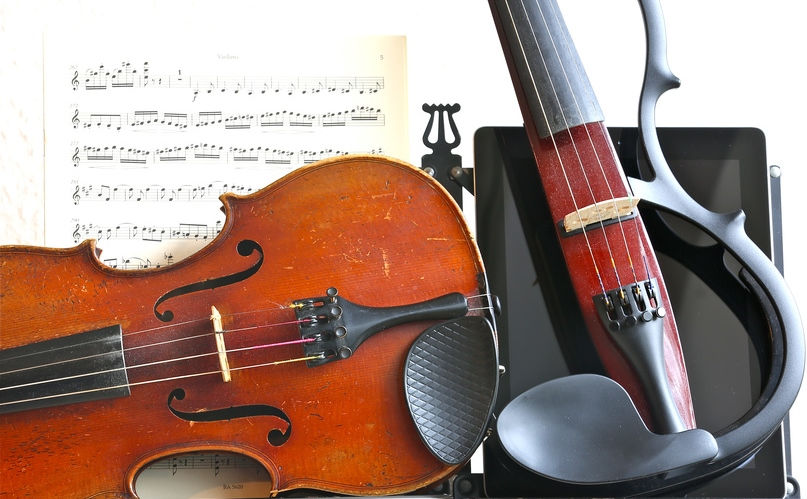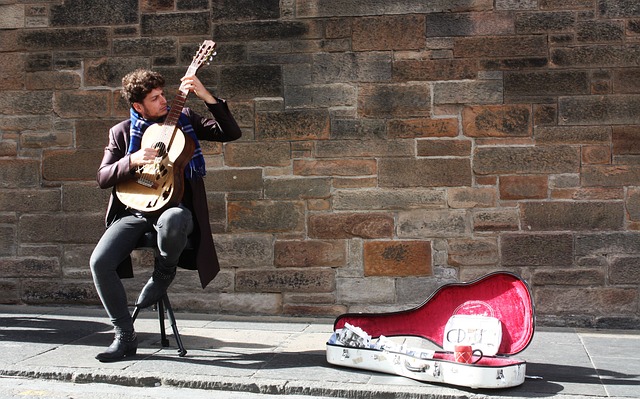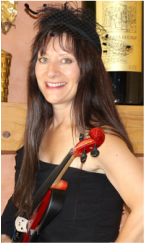|
At some point in a musician’s life, the Circle of Fifths are introduced either at a music lesson, music theory class, or just out of necessity. During my early learning years, the Circle of Fifths was explained to me by several music teachers but for some reason I never grasped the full concept until out of necessity. A need to learn the Circle of Fifths cropped up shortly after an embarrassing moment during a jazz ensemble rehearsal when one of the musicians said “hey, let’s take if from the top in the key of ‘B flat minor’ rather than ‘B minor’. WHAT, oh no, think-think, how many flats are in the key of B flat minor? Thank goodness, I was able to wing it and simplified my part to half notes and a bunch of rests. It was definitely time to re-visit the Circle of Fifths again! How I use the Circle of Fifths There are numerous uses and in-depth music theory explanations about the Circle of Fifths, but for me the Circle of Fifths comes in most handy as a quick reference guide for key signatures. To back up a bit: The Circle of Fifths is a visual tool to help understand the relationship between major and minor keys. If you memorize the chart or have a copy handy, you can easily figure out how many sharps or flats are in a particular key. Example of Quick Referencing To know how many flats or sharps are in the key of ‘B flat minor', simply find Bbm (aka B flat minor) on the chart, and wha-la, you can either play with 7 sharps or 5 flats (your choice, it produces the same notes). Okay let’s try something else: You are playing a piece of music with 3 sharps but not sure which key you are in. Quickly find the music staff with 3 sharps and there you go, you are either playing in A major or F# minor (note: F#m and Gbm are the same key). More Uses Knowing how to read the Circle of Fifths will help you recognize the relationship between major keys and their relative minor keys. A major key and its minor partner (outside circle = major, and inside circle = minor) uses the same sharps (indicated as #) and flats (shown as b) in their key signature or scale. Example: Find D major (D in the outside circle). D major’s relative minor key is B minor (Bm). They both use 2 sharps. Coolness! Here are a few more tips:
I hope that helps and gets you started! If you're ready to learn more in-depth uses, there are plenty of music theory books and information available. If you find the chart challenging to memorize, no worries, just click on the Download File below.
“Inside the Circle of Fifths” author: Suzy, violinist and founder of Vogue Violin www.vogueviolin.com
0 Comments
Have you ever wanted to trade in those classical performance clothes for some leather pants and cool looking outfits? Me too! Well, I still haven’t found those perfect leather pants, but I do have a few tips for your first rehearsal playing with a rock band. Most classical violinists are giddy and eager at their first rock band rehearsal. But I must forewarn you, many rock bands play effortlessly by ear and some may not even use music. Awkwardly, classically trained musicians often lack in being able to play by ear and are helpless without sheet music. When you ask for the first violin part it could be an embarrassing moment! However, you may be in luck, many rock bands use chord charts as a general guide during rehearsals. Chord charts are musical symbols and notations that illustrate which chords and rhythms are to be played for a particular song. If you’re not familiar with using chord charts, the best place to start is to know the Circle of Fifths inside and out. An explanation on the Circle of Fifths will be next month’s blog, but In the meantime, check out a few YouTube videos for a head start.
If you're out on a limb and have no chord charts or don’t know what key the band is playing in, it’s time for a bit of pre-planning. My best recommendation is to sit in on a few rehearsals and hit the record button on your iPhone. Hash out playing by ear at home or with your private teacher, and get a good handle on improvising background notes, harmonies and rhythmic crunches. Once you master those, move on to a few solo licks. Most importantly, don’t give up or feel intimidated. With practice, you’ll eventually get it and will be wearing those awesome leather pants! I hope you enjoyed this blog. If you have any comments or questions, please comment below. “Playing Violin in a Rock Band” author: Suzy, violinist and founder of Vogue Violin www.vogueviolin.com Many people ask me “what’s the difference between a violin and a fiddle”? Good question! However, there’s really no difference in the instrument itself, but there is a difference in the way you play it. A violin player typically plays classical or jazz music, while a fiddle player plays folk, Celtic, country or bluegrass music. One thing I’ve learned from fiddle players is they tend to have a little more fun with customizing their instruments. By customizing the set-up of their instruments, they often obtain their own trademark sound. Strings: Metal, synthetic core or catgut strings (I’ll explain this later) are the standard choices. Fiddlers are more likely to choose steel strings over violinists. Okay, back to the catgut. Catgut strings were traditionally made out of sheep intestines (not cat guts thank goodness), and are now made with a synthetic core material wrapped in metal. Bridge: A bridge is the thin piece of wood with a gentle arch that holds up the strings. Some fiddlers prefer to modify their bridge with a flatter arch in order to play triple stops more easily. Triple stops are 3 notes played simultaneously that are often played throughout a fiddle tune. Cross Tuning: In fiddle music, it is not uncommon to switch up the standard G-D-A-E tuning set up, somewhat like guitarists. Some of the more common fiddle tunings are A-E-A-E, D-D-A-D, G-D-G-D, and G-D-G-B. So there you have it, "it’s the same instrument with different styles of playing". What’s your favorite style, violin or fiddle?
“Violin or Fiddle, what’s the difference?” author: Suzy, violinist and founder of Vogue Violin www.vogueviolin.com
The first question new beginners ask is ‘what do I need to get started’. Well, of course the most obvious is you need a violin and a bow, but there are a few more details you may want to know.
Basic Equipment Violin: If you are a beginner, you won’t need a fancy violin to start with. I recommend to spend at least a few hundred dollars for a decent violin. If you buy a really cheap violin it may constantly slip out of tune or even crack. When ordering a violin on-line, be sure to know the size you are buying: 1/8, 1/4, half size ½ or full size 4/4. If you are 10 years or older, you will most likely need a full size 4/4 violin. If you live by a music store, it is best to make that your first stop. They will have everything you need there and you can try out several violins in your price range. Bow: Typically, your violin will already come with a bow, but if it doesn’t, be aware that there is a big price range to choose from just like your violin. Make sure that the bow hair is clean (without black marks or yellowing) otherwise you will need to get the bow re-haired to produce a solid sound. Bows also come in different weights. For beginners it is best to lean toward a heavier bow for a more stable bowing motion. It is best to get your bow re-haired about every 6 months or once a year if you don’t play that often. Case: I highly recommend a new case over a used case. Many used cases have a musty or moldy smell and the odor may permeate into the violin. When shopping for a case, make sure it’s sturdy and has several compartments to store you rosin, shoulder rest, tuner, extra strings, pencils or anything else you may need. Rosin: Rosin is made of tree pitch and is what helps the bow grip the strings and make sound. There are many brands and types to choose from but if you stay in the $8 to $10 range you will have a decent quality rosin. Shoulder Rest: I could write an e-book just on shoulder rests, hey maybe I will! Shoulder rests are a very personal choice and depends a lot on your body size (neck length, shoulder spread, etc.). Some violin teachers believe shoulder rests should not be used, but you should be the judge and try out a few for size. It is best to try out as many different shoulder rest models as you can. It takes a while to find one that is the perfect fit. I have gone through at least 6 different model types throughout the years. Currently, my favorite is the Wolf Forte Secondo model because it’s fully adjustable. Extra Set of Strings: It’s always a good idea to have an extra set of strings on hand. My favorites are Dominant (Thomastik Infeld) for acoustic violins and for electric violins, D'Addario Electric Violin Strings. “Basic Equipment Needs for Beginning Violin Students” author: Suzy, violinist and founder of Vogue Violin www.vogueviolin.com Did you know that most cities require a busking permit? That’s a permit for anyone who entertains in a public place for donations. These permits are typically obtained from your local municipality’s permitting department.
Some cities issue busking permits for free, and others charge a nominal fee like $50.00 per year or $35.00 per session. But beware, some cities require you to audition in front of judging panel to ensure you are good enough for a public performance! The busking rules outlined on the permits are generally pretty simple: Don’t play in the same spot for more than 45 minutes. Don’t make a nuisance of yourself and don’t aggressively ask for money. Most likely there will be more rules than that, but those are the most common ones. The most important thing is to have fun and have your permit handy! Good luck, and I hope it goes smoothly. I would love to hear some of your stories, any good ones out there? “Don’t Get Caught Without a Busking Permit” author: Suzy, violinist and founder of Vogue Violin www.vogueviolin.com |
|||||||||
